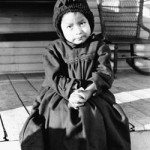The Native Village web site is professional and well maintained. It is copyrighted by an individual, but is too good to be run as a hobby. However, no mention is made of how it is maintained financially.
Web site: http://www.nativevillage.org/index.htm
This vibrant site publishes twice a month and is designed for educators and youth. It is not particularly scholarly but is a great example of a functioning format of a Web resource for an Indigenous community.
The first publication is “Native Village Youth and Education News” which is a news magazine of interesting stories on Indigenous topics.
Link to Volume 1: http://www.nativevillage.org/NOV%20News/V1%20November%202009%20headlines.htm
The second publication is “Native Village Opportunities and Websites”, which is divided into two sections:
“Opportunities” lists all the activities (and there are plenty) going on related to Indigenous Knowledge and Community.
Link: http://www.nativevillage.org/Opportunities/10-15-09%20OPPS.htm
“Websites” offers a selection of interesting Websites every fortnight.
Link: http://www.nativevillage.org/Libraries/NativeVillageLibrariesHOME.htm
There is also the “Native American Language Library”, which received recognition by the American Indian Review Magazine as the “Best Language Website on the Internet”. The page offers a lot of good links to websites on Indigenous languages and is a great resource for teachers wanting to bring Indigenous content into the curriculum.
Link: http://www.nativevillage.org/Libraries/Language%20Libraries.htm

 The
The